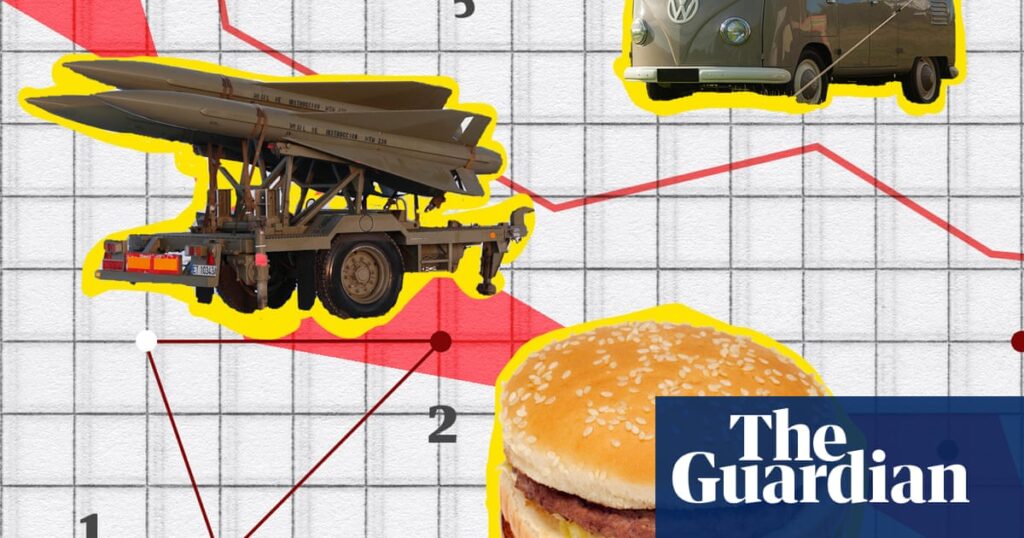
In the intricate web of global defense, Europe’s military dependence on the United States for arms and equipment remains a pressing concern. Recent analysis reveals that despite ambitions for European-led rearmament, the continent’s militaries overwhelmingly rely on US-made weapons. This reliance raises significant questions about Europe’s strategic autonomy, especially as geopolitical tensions escalate worldwide.
The analysis, conducted by The Guardian, scrutinizes stockpile data, underscoring the substantial role US arms play in European defense strategies. This development comes as the US continues to advocate for increased military spending among NATO members, urging them to bolster their defense capabilities amidst emerging threats.
Rising Concerns Over Strategic Autonomy
Europe’s reliance on US arms is not a new phenomenon. Historically, the transatlantic alliance has been a cornerstone of European security. However, the current geopolitical climate, marked by conflicts in the Middle East and rising tensions with Russia, has reignited debates about the need for a more self-reliant European defense posture.
According to defense expert Dr. Emily Harding, “The reliance on US arms is a double-edged sword. While it ensures access to cutting-edge technology, it also binds European defense capabilities to US foreign policy decisions.”
Implications of US Arms Dominance
The dominance of US arms in Europe has several implications. On one hand, it guarantees a certain level of interoperability among NATO forces, crucial for joint operations. On the other hand, it limits Europe’s ability to act independently, as seen in recent conflicts where European nations have had to align with US strategies.
By the Numbers: 70% of European military equipment imports come from the United States, according to recent data.
This dependency also affects Europe’s defense industry. While some European countries, like France and Germany, have robust military manufacturing sectors, they still face challenges in competing with US defense giants in terms of scale and innovation.
Global AI Divide: A New Frontier
Meanwhile, the global artificial intelligence (AI) landscape is experiencing its own divide. A recent chart from The New York Times highlights how the AI boom is concentrated in specific countries and companies, leaving others trailing behind. This uneven distribution of AI computing power has significant implications for global competitiveness and innovation.
AI expert Dr. James Lin comments, “The concentration of AI resources in a few hands could lead to a new form of digital inequality, affecting everything from economic growth to military capabilities.”
Europe’s Position in the AI Race
Europe finds itself in a challenging position in the global AI race. While countries like the UK and Germany are making strides in AI research, they still lag behind the US and China in terms of investment and infrastructure.
Statistics show that the US and China account for over 60% of global AI research funding.
Efforts are underway to bridge this gap, with the European Union investing in AI research and development. However, experts warn that more coordinated efforts are needed to ensure Europe remains competitive in this critical field.
Summer Holiday Trends: A Cultural Insight
On a lighter note, a recent visualization by Sebastian Gräff from The European Correspondent offers a glimpse into European summer holiday trends. The chart reveals that northern European countries tend to take holidays earlier, with breaks more spread out, while southern countries prefer later, more concentrated vacations.
This cultural insight not only highlights regional differences but also reflects broader economic and social patterns across Europe. The timing of holidays can impact everything from tourism revenues to workplace productivity.
Economic Impact of Holiday Trends
The timing of holidays has a direct impact on the tourism industry, a significant economic driver for many European countries. Northern countries, with their earlier holidays, often see a boost in domestic travel, while southern countries benefit from international tourists seeking warmer climates later in the season.
Tourism contributes over 10% to the GDP of countries like Spain and Italy, according to recent economic reports.
As Europe continues to navigate economic challenges, understanding these trends can help policymakers and businesses better prepare for seasonal fluctuations.
Conclusion: Navigating a Complex Landscape
As Europe grapples with its reliance on US arms, the global AI divide, and cultural holiday trends, it faces a complex landscape that requires careful navigation. The continent’s ability to adapt and innovate will be crucial in maintaining its strategic autonomy and economic vitality in an increasingly interconnected world.
Looking ahead, European leaders must balance the benefits of existing alliances with the need for greater independence, ensuring that Europe remains a formidable force on the global stage.





